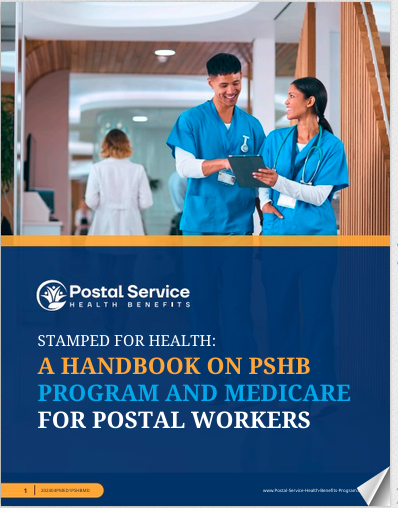Key Takeaways
-
Copayments may seem straightforward, but they often vary based on factors like network status, service type, and plan design.
-
Understanding what impacts your out-of-pocket costs can help you make informed healthcare decisions and avoid unexpected expenses.
Copayments: More Than Just a Fixed Fee
As a USPS employee, you might think that copayments are simple—you pay a set fee for a doctor’s visit, prescription, or medical service. However, copayments are rarely that straightforward. They can fluctuate based on several factors, including whether a provider is in-network, the type of service you receive, and even how your health plan categorizes different treatments. Let’s break down why copayments aren’t as simple as they seem and what you should watch for when managing your healthcare expenses.
1. Copayments Depend on Provider Networks
One of the biggest factors influencing your copayments is whether your healthcare provider is in-network or out-of-network. Here’s why:
-
In-Network Providers – These are doctors, specialists, and facilities that have agreed to a negotiated rate with your plan. Your copayment for these providers is usually lower and predictable.
-
Out-of-Network Providers – These providers have no set agreement with your plan, meaning your copayment could be significantly higher—or you might even have to pay a percentage of the total bill instead of a fixed amount.
-
Emergency Situations – Some plans allow in-network rates for emergency care, even if the provider is technically out-of-network, but this isn’t always the case.
What to Watch For
-
Always confirm whether your doctor is in-network before scheduling an appointment.
-
Check whether urgent care centers or emergency rooms in your area are covered at in-network rates.
-
Be aware that some providers working within an in-network hospital, such as anesthesiologists, may still be out-of-network.
2. Copayments Vary by Service Type
Even when staying within your network, copayments are not a one-size-fits-all expense. Different types of services come with different copayment amounts.
Common Copayment Categories
-
Primary Care Visits – These typically have the lowest copayments, as they encourage routine medical care.
-
Specialist Visits – Seeing a specialist, such as a cardiologist or dermatologist, usually involves a higher copayment than visiting a primary care physician.
-
Emergency Room Visits – ER visits often come with the highest copayments due to the higher costs associated with emergency medical care.
-
Urgent Care – Many plans charge lower copayments for urgent care visits compared to ER visits, making urgent care a more affordable option for non-life-threatening conditions.
-
Prescription Drugs – Different tiers of medications come with different copayment levels. Generic drugs tend to have the lowest copayment, while brand-name and specialty medications cost more.
What to Watch For
-
Check how your plan categorizes services to understand your expected copayments.
-
If you frequently see specialists, consider how often you might have to pay a higher copayment.
-
Compare urgent care and ER copayments to determine the most cost-effective choice in non-emergency situations.
3. Copayments Can Change Based on Plan Structure
Your copayment amounts can also fluctuate depending on how your health plan is structured. Some plans have fixed copayments, while others use a cost-sharing approach that may lead to higher out-of-pocket expenses.
Factors That Affect Copayments
-
High-Deductible Health Plans (HDHPs) – These plans usually have lower monthly premiums but require you to pay more out-of-pocket before coverage kicks in, meaning you may pay the full cost of a visit until the deductible is met.
-
Coinsurance vs. Copayments – Some plans use coinsurance instead of fixed copayments, meaning you pay a percentage of the total cost rather than a set fee.
-
Tiered Copayments – Certain plans use tiered copayments, where the cost differs based on the type of provider or service used.
What to Watch For
-
If you have an HDHP, factor in your deductible when budgeting for healthcare costs.
-
Understand whether your plan uses copayments or coinsurance for major procedures.
-
Be mindful of tiered pricing structures that could result in higher costs if you don’t choose the right provider.
Staying Ahead of Unexpected Healthcare Costs
Knowing that copayments aren’t always predictable, how can you better manage your healthcare expenses? Here are a few steps you can take to stay prepared.
1. Review Your Plan’s Summary of Benefits
Every health plan provides a summary that details what you’ll pay for different types of care. Reviewing this document can help you understand:
-
What your in-network and out-of-network costs are.
-
How much you’ll pay for specific services.
-
Whether you’re subject to a deductible before copayments apply.
2. Use In-Network Providers Whenever Possible
Since out-of-network providers often charge higher copayments (or don’t accept copayments at all), choosing in-network care can save you money. If you’re unsure whether a provider is in-network, you can:
-
Call your insurance company to verify coverage.
-
Use your plan’s online provider directory.
-
Ask the provider’s office directly before scheduling an appointment.
3. Plan for Prescription Costs
Prescription drug copayments can add up quickly, especially if you require ongoing medication. To manage these costs:
-
Opt for generic medications whenever possible.
-
Check if your plan offers mail-order discounts.
-
Consider using a preferred pharmacy network to get the lowest copayment rates.
4. Understand When Emergency Care Is Necessary
Since emergency room visits tend to have the highest copayments, it’s important to use them only when necessary. When dealing with minor illnesses or injuries, urgent care or telehealth options can provide treatment at a lower cost.
5. Ask Questions About Billing and Costs
Sometimes, unexpected charges appear even when you expect a simple copayment. Before undergoing medical procedures or treatments, ask:
-
Is this provider in-network?
-
What will my copayment be for this service?
-
Are there any additional charges beyond the copayment?
Making Sense of Your Copayments for Smarter Healthcare Decisions
Understanding the details of your copayments can make a significant difference in managing your healthcare expenses. While copayments may seem straightforward at first glance, factors like provider networks, service types, and plan structures can make them more complex than they appear. By staying informed and actively reviewing your coverage details, you can make better financial decisions and avoid unnecessary healthcare costs.
If you need assistance understanding your healthcare options, reach out to a licensed agent listed on this website for professional guidance tailored to your USPS employee benefits.






